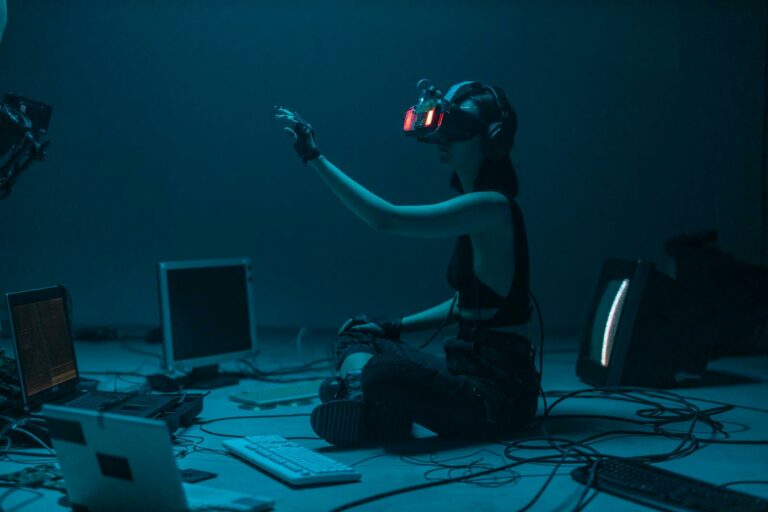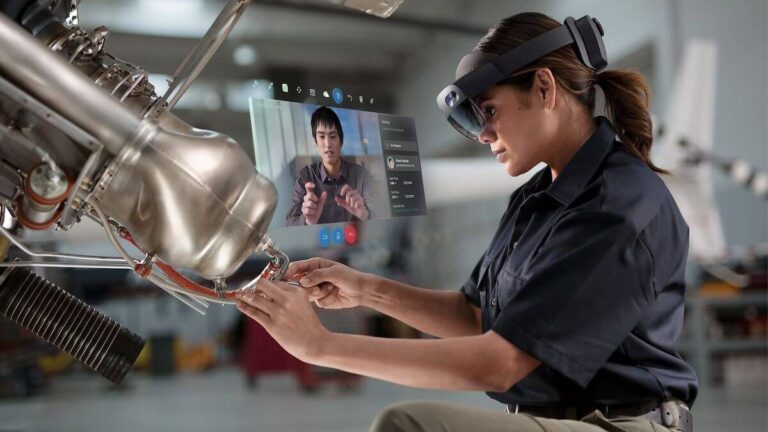Comparing Virtual Desktop and Immersed Apps for Wireless VR Gaming
As I immerse myself in the world of wireless VR gaming, I'm struck by the vastly different approaches of Virtual Desktop and Immersed apps. Virtual Desktop's lag-free connection and impressive screen resolution make for a seamless gaming experience, but Immersed's support for multiple virtual monitors has me intrigued. While one app excels in raw gaming performance, the other offers unparalleled customization options. I'm left wondering: which app will reign supreme in the world of wireless VR gaming, and what does this mean for the future of immersive productivity?
Key Takeaways
- Virtual Desktop offers a seamless wireless VR gaming experience with lag-free Bluetooth connection and screen resolution comparable to 720p-1080p.
- Immersed supports up to five virtual monitors with customizable positions, ideal for multitasking and productivity.
- Virtual Desktop provides a more seamless experience with portable productivity features, while Immersed's resolution quality is lower.
- Both apps enable wireless PC VR gaming, but Virtual Desktop has better screen resolution and a more seamless experience.
- Immersed stands out with its unparalleled customization options and support for multiple virtual monitors.
Virtual Desktop App Overview
With Virtual Desktop, I can effortlessly switch to wireless PC VR gaming, enjoying a lag-free Bluetooth connection and portable productivity from anywhere.
This app is specifically designed for wireless PC VR gaming, and it shows in its user experience. I can connect my Bluetooth keyboard and mouse seamlessly, and the screen resolution is comparable to 720p-1080p. While it may not be as sharp as a physical monitor, the performance is surprisingly comparable.
I've noticed a slight decrease in pixel density, but it's still sufficient for most tasks. The battery life lasts around 2 hours, which is decent considering the portability it offers.
Immersed App Features and Benefits
As I shift my focus to Immersed, I'm excited to explore the features that set it apart from Virtual Desktop, particularly its ability to support up to five virtual monitors. This customization option is a game-changer for productivity, allowing me to multitask with ease.
I can position and distance each monitor to my liking, creating an immersive experience that's tailored to my needs. Unlike Virtual Desktop, Immersed doesn't have the same limitations when it comes to screen real estate. With Immersed, I can work on multiple projects simultaneously, without feeling cramped or restricted.
The level of Immersed app customization is unparalleled, making it an attractive option for those seeking a seamless wireless VR gaming experience.
Comparing Virtual and Immersed Apps
I'll now explore a comparison between Virtual Desktop and Immersed apps, highlighting their strengths and weaknesses to help me decide which one suits my wireless VR gaming needs best.
When it comes to performance comparison, Virtual Desktop offers a lag-free Bluetooth connection and a screen resolution comparable to 720p-1080p, while Immersed supports up to 5 monitors with customizable positions and distances. However, Immersed's resolution quality is lower compared to Virtual Desktop.
From an analysis of user experience, Virtual Desktop provides a more seamless experience with its portable productivity features, whereas Immersed's multiple monitor setup offers more flexibility.
Considering feature limitations and customization options, Immersed's pass-through mode and keyboard portal are unique advantages, but Virtual Desktop's simplicity and ease of use are hard to ignore.
Setting Up Virtual Desktop and Immersed
By installing Virtual Desktop from the Meta Quest store and setting up the streamer app on my PC, I'm ready to immerse myself in a seamless wireless VR gaming experience.
Next, I downloaded and installed the Immersed app from the Meta Store, creating an account and downloading the client on my PC. To guarantee a smooth experience, I made sure to customize the settings for Virtual Desktop and Immersed according to my preferences.
Here are some troubleshooting tips to keep in mind:
- Check your internet connection: A stable internet connection is essential for a seamless experience.
- Adjust your graphics settings: Lowering graphics settings can enhance performance in demanding games.
- Restart your apps and PC: Sometimes, a simple restart can resolve connectivity issues.
Productivity in Wireless VR Gaming
Now that I've set up Virtual Desktop and Immersed, I'm thrilled to explore how these apps can transform my wireless VR gaming experience into a productive powerhouse.
I can already envision the possibilities – responding to emails, editing documents, and even coding in a fully immersive environment. Wireless VR productivity is the future, and I'm excited to be at the forefront of this revolution.
With Virtual Desktop, I can work from anywhere, enjoying the freedom to be productive without being tethered to a physical desk. Immersed takes it a step further, providing multiple virtual monitors that allow me to multitask like a pro.
The gaming immersion experience is unparalleled, and I'm enthusiastic to see how these apps will elevate my productivity to new heights.
Conclusion
As I weigh the pros and cons of Virtual Desktop and Immersed, I realize that my wireless VR gaming experience depends on my priorities.
If I crave a seamless gaming experience with excellent resolution, Virtual Desktop is the way to go.
But if I need to multitask and boost productivity, Immersed's customization options and multiple monitor support win me over.
Ultimately, it's a trade-off between gaming excellence and productivity power.







